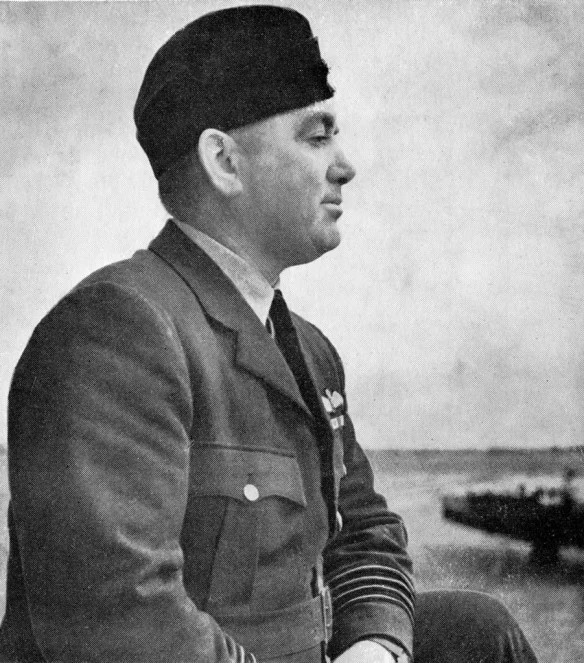Operations
Operations
Early Days
New Zealanders formed a greater proportion of Bomber Command in the first year of war than at any later period. At a time when the shortage of trained air crews was acute they had they made an important contribution to the British bombing effort, and with their fellows in the RAF they laid the foundation of a force which was later to become a potent factor in allied strategy.

Bristol Blenheim Mark IV, R3600, of No. 110 Squadron RAF, undergoes servicing – seemingly staged for the photographer – at RAF Wattisham, Suffolk.
Armourers unload 250-lb GP bombs and Small Bomb Containers (SBCs) of incendiaries from a trolley, while other groundcrew refuel the aircraft and attend to the engines, the cockpit and the gun-turret, accompanied by a pet dog on the engine cowling.
(Credit :F/L B J H Daventry / IWM)
During the period from the beginning of the war to the end of 1940 about, about 150 New Zealanders with short service commissions and the RAF flew for varying periods with Bomber Command operational squadrons. They were scattered amongst every squadron and the command and took part in almost every operation.
Nearly half of them were reported missing – a few later found to have been taken as prisoners of war, the great majority killed in action.
A further group of New Zealanders were already in Britain, preparing to deliver the first of the RNZAF’s order of 30 Vickers Wellington bombers to New Zealand. With the political situation in Europe deteriorating, the New Zealand government decided to place the RNZAF on alert.
In a letter on August 28, 1939, S/L Sidney Wallingford of the New Zealand Liaison Office wrote to the OC New Zealand Squadron, S/L Morris Buckley: “I am directed to inform you, therefore, that you and the RNZ AF officers and airmen under your command are to be available for duty with the Royal Air Force as ordered by higher authority”.

Squadron Leader Maurice William Buckley, MBE, RNZAF.
(Credit: “Return at Dawn”, by Hilary Saunders)
On 3 September war was declared. Two days later, on a radio broadcast Prime Minister Michael Joseph Savage said of Britain, “Where she goes, we go, where she stands, we stand”. New Zealand offered to place the full order of Wellington bombers, and their personnel at the disposal of the RAF. The British government gratefully accepted. This was to be the first material contribution to Britain’s war effort by any Commonwealth country, and not an insignificant one – 30 bombers and 60 airmen”.
The New Zealand pilots and airmen, ready to fly the Wellingtons home, now faced staying in England to fight Germany. They were eager to join the war effort but wanted to remain united as a unit.
So began, as Chris Newey writes, in The First Flight, “It was the start of a seven month long discussion back and forth between the New Zealand government, the UK air ministry, and RAF Bomber Command – over what to do with the unit, too small to stand alone, unable to be quickly expanded with trained New Zealand personnel, far from combat ready, and yet with significant potential morale building value, both in New Zealand and Britain”.

“A SQUADRON GROUP. (1) Squadron Leader C.E. Kay; (2) Flying Officer J. Adams; (3) Flight Lieutenant N. Williams; (4) Wing Commander M.W. Buckley; (5) Flight Lieutenant A.A.N. Breckon, and others.”
(Credit: “Early Operations with Bomber Command” by B.G. Clare)
In addition, airmen trained by the RNZAF began to arrive in increasing numbers during the latter half of 1940. By November of that year there were more than one hundred RNZAF airmen additional to those with short service commissions, serving and Bomber Command.
References:
- Clare, B.G. (1950). New Zealand in the Second World War, Official History. Early Operations with Bomber Command.
- Newey, C. (2024). The First Flight. The Origins of the New Zealand Bomber Squadron.